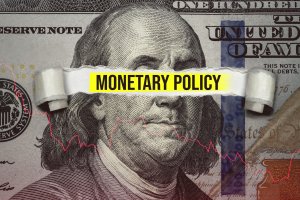What lessons need to be drawn on this anniversary?
The failure of Lehman Brothers cannot be treated as a standalone event. It was one incident in a longer-term process in which government policies – monetary, regulatory, and safety net policies especially - were steadily increasing systemic risks and making significant crises almost inevitable.
For decades, monetary policy has focused on achieving a low positive level of inflation with scant regard for associated increases in credit, debt, and other financial developments. In association with financial deregulation, this produced unsustainable financial developments (“booms”) culminating in downturns (“busts”) which then led to widening financial safety nets[1] and aggressive monetary easing.[2] What is needed instead is a system that “leans against the wind” of financial excesses and is also more tolerant of downturns.[3] While small downturns facilitate both the ease and the exit of firms, and thus support the capitalist process, larger downturns can spark political turmoil that threatens both capitalism and democracy.[4]
Our current policy framework has become unsustainable. Monetary easing in successive cycles has resulted in levels of both public and private debt that are unsustainable at anything like normal interest rates. But, without adequate “exit”, much higher inflation now threatens. Stricter regulation of banks, welcome in itself, has encouraged wholesale migration of lending to the non-banking sector which is both less regulated and less transparent. Moreover, as crises in these expanding sectors have become more systemic, government safety nets have steadily expanded, with the failure of Lehman Brothers an unusual exception to the rule. “Bailing out the bankers” has encouraged moral hazard, has generated political discontent in many countries, and could prove a threat to fiscal sustainability.
The recommendation to resist credit upturns more vigorously than in the past, and subsequent downturns less vigorously, can be carried out with current institutional structures. Measures to improve the self-discipline of lenders (greater personal liability) and the effectiveness of market discipline (better accounting and auditing) would also seem called for. Should this fail, then more fundamental institutional change – perhaps the introduction of a “narrow money” regime - might be considered. At all stages, policymakers must think much more carefully about the practicality as well as the unintended consequences of their decisions.[5]
Notes
[1] William White (2004) “Are Changes in Financial Structure Widening Safety Nets?” BIS Working Papers 145, February.
[2] William White (2016) “Ultra-Easy Money: Digging the Hole Deeper?” Business Economics Vol. 51, Issue 4, pp. 188-202, October.
[3] William White (2020) “International Financial Regulation: Why it Still Falls Short” INET Working Paper 131, July.
[4] William White (2023) “What Next for the Post-Covid Global Economy: Could Negative Supply Shocks Disrupt Other Fragile Systems?” INET Working Paper 199, January.
[5] The economy cannot be characterized as linear and deterministic. Rather, it is a complex and adaptive system which needs a totally different form of governance. See William White (2017) “Conducting Monetary Policy in a Complex, Adaptive Economy” Credit and Capital Markets, Vol. 50, Issue 2, pp 213-235.






